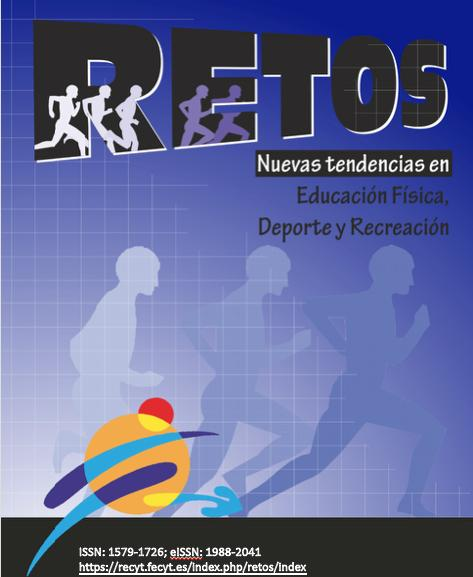Self-directed movement learning: pedagogical reflections
DOI:
https://doi.org/10.47197/retos.v65.111203Keywords:
Didactics, learning, movement, physical education, teachingAbstract
Introduction:PhysicalEducation,intheeducationalsector,makesuseofmovementtostimulateandteachchildrenandyoungpeopletoputthemselvesinactivityandmaintainanactivelife.However,movementisnotalwaysexplored,analyzed,andcarriedoutwiththenecessarycare.
Objective:Topresentreflectionsondidacticguidelinesfortheteachingofmovement.
Methodology:ThisisanessaywithatheoreticalapproachrelatedtothethemeofteachingmovementinPhysicalEducationclasses
Discussions:ItiscommontohaveaPhysicalEducationthatworksonthesimplicityofmovementandonlyonthereproductionofstereotypedandstandardizedactionsbyinstitutionalizedsport.Itisimportanttounderstandthatweaccesstheworldthroughmovementandperceive it,understanditandrelatetoitthroughtheresponsesthatthisrelationshipprovidesus.Inthissense,seekingwaystoenhancetheinteractionbetweenman,theworldandmovementbecomesanimportantguidelineintheworkofthePhysicalEducationprofessional
Conclusions: As a conclusive point, we have that the movement as a gateway to learning, deserves to be better cared for when being taught, respecting the stages, individualities, interests and needs of the participants, providing them with the condition of autonomy over their world of movement.
References
Capra, F. (2006). O ponto de mutação. Editora Cultrix.
Chávez Erives, A. I., Islas Guerra, S. A., Ortiz Rodríguez, C. J., Orona Escápite, A. ., & Martínez Trevizo, A. (2025). Intervenciones en educación física para la promoción de estilos de vida activos en ni-ños y adolescentes: una revisión sistemática. Retos, 62, 503–512. https://doi.org/10.47197/retos.v62.109485
Davids, K., Araújo, D., Seifert, L., & Orth, D. (2015). Expert performance in sport: An ecological dynam-ics perspective. In Routledge handbook of sport expertise (pp. 130-135). Routledge.
Eustáquio, J. C. Ginástica Artística: Aprendendo para ensinar. Rio de Janeiro. Brasil. B4W https://josecarloseustaquio.com.br/products/livro-completo-ginastica-artistica-aprendendo-para-ensinar. Acesso em 07 out 2024.
Hildebrandt-Stramann, R. (2009). Educação Física aberta à experiência. Uma concepção didática em discussão. Rio de Janeiro: Imperial Novo Milênio.
Hildebrandt-Stramann, R.; Taffarel, C. Z. (2017) Formação de professores e trabalho educativo na Edu-cação Física. Ijui: Editora UNIJUI.
Hildebrandt-Stramann, R.; Hatje, M.: Palma, L. E.; Oliveira, A. A. B. de. (2020). Currículo Modularizado à Formação Inicial em Educação Física: Uma proposta em Discussão. Ijui: Editora UNIJUI..
Hildebrandt-Stramann, R.; Hatje, M.: Palma, L. E.; Oliveira, A. A. B. de. (2022). Considerações Curricula-res Para a Formação Universitária dos Estudantes de Educação Física. Ijui: Editora UNIJUI.
Hosner, E.J.; Künzell, S. (2022). Einführung in die Bewegungswissenschaft. Wiebelsheim: Limpert.
Kunz, E. (2010) Transformação didático pedagógica do esporte. Ijui: Editora UNIJUI.
Meinel, K.; Schnabel, G.(1984). Motricidade I. Rio de Janeiro: Ao Livro Técnico.
Merleau Ponty, M. (1966). Phänomenologie der Wahrnehmung. Berlim: Gruyere.
Oliveira, A. A. B. de, Santana, D. D. M. G., & de Souza, V. D. F. M. (2021). O movimento como porta de acesso para a aprendizagem. Retos: nuevas tendencias en educación física, deporte y recreación, (41), 834-843. DOI: https://doi.org/10.47197/retos.v41i0.84287
Santoso, N. ., & Puji Santoso, N. . (2024). Estudio de caso: modelo de aprendizaje basado en problemas para las habilidades básicas de movimiento en el fútbol y actividad de aprendizaje (Case study: problem-based learning model for soccer basic movement skills and learning activity). , 61, 578–582. https://doi.org/10.47197/retos.v61.109754
Scherer, H.-G.; Bietz, J. (2013). Lehren und Lernen von Bewegungen. Baltmannsweiler: Schneider.
Scherer, H.-G. (2018). Brückenschläge. Interdisziplinäre Forschung zwischen Sportpädagogik und Bewegungswissenschaft. Baltmannsweiler: Schneider.
Tani, G. et al. (1988). Educação Física Escolar: fundamentos de uma abordagem desenvolvimentista. São Paulo: E.U.P.
Tani, G. (2005) Comportamento Motor: aprendizagem e desenvolvimento. São Paulo. Guanabara Koogan.
Tholey, P. (1987). Prinzipien des Lehrens und Lernens sportlicher Handlungen aus gestalttheo-retischer Sicht. Handlungskontrolle und soziale Prozesse im Sport. Köln, 95-106.
Trebels, A. H. (1992). Plaidoyer para um diálogo entre teorias do movimento humano e teorias do mo-vimento no esporte. Revista Brasileira de Ciências do Esporte, 13(3), 338-344.
Weizsäcker, V. V. (1966). Der Gestaltkreis. Frankfurt: Suhrkamp.
Wulf, G., Höß, M., & Prinz, W. (1998). Instructions for motor learning: Differential effects of internal versus external focus of attention. Journal of motor behavior, 30(2), 169-179. Doi: 10.1080/00ia222899809601334.
Wulf, G., & Lewthwaite, R. (2016). Optimizing performance through intrinsic motivation and attention for learning: The OPTIMAL theory of motor learning. Psychonomic bulletin & review, 23, 1382-1414. Doi: 10.3758/s13423-015-0999-9.
Downloads
Published
How to Cite
Issue
Section
License
Copyright (c) 2025 Amauri Aparecido Bassoli de Oliveira, Reiner Hildebrandt-Stramann

This work is licensed under a Creative Commons Attribution-NonCommercial-NoDerivatives 4.0 International License.
Authors who publish with this journal agree to the following terms:
- Authors retain copyright and ensure the magazine the right to be the first publication of the work as licensed under a Creative Commons Attribution License that allows others to share the work with an acknowledgment of authorship of the work and the initial publication in this magazine.
- Authors can establish separate additional agreements for non-exclusive distribution of the version of the work published in the journal (eg, to an institutional repository or publish it in a book), with an acknowledgment of its initial publication in this journal.
- Is allowed and authors are encouraged to disseminate their work electronically (eg, in institutional repositories or on their own website) prior to and during the submission process, as it can lead to productive exchanges, as well as to a subpoena more Early and more of published work (See The Effect of Open Access) (in English).
This journal provides immediate open access to its content (BOAI, http://legacy.earlham.edu/~peters/fos/boaifaq.htm#openaccess) on the principle that making research freely available to the public supports a greater global exchange of knowledge. The authors may download the papers from the journal website, or will be provided with the PDF version of the article via e-mail.


